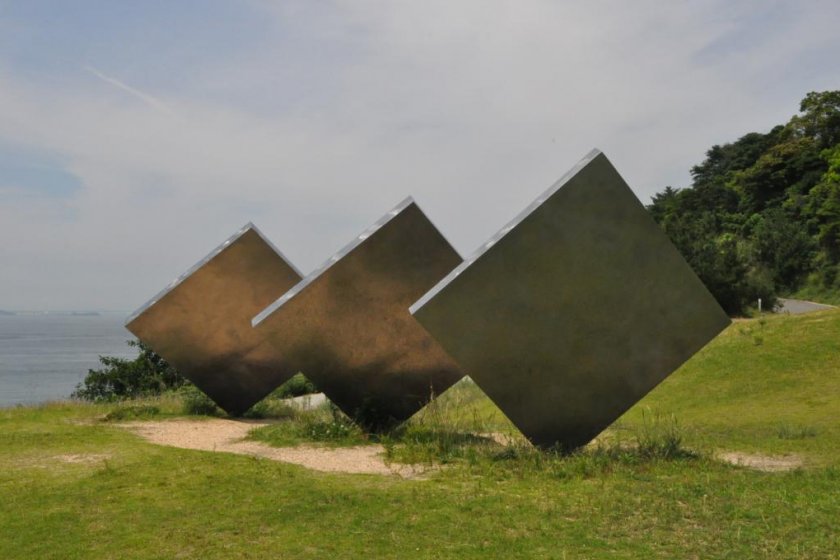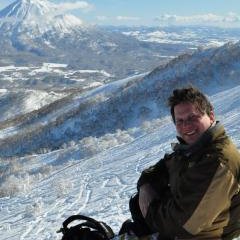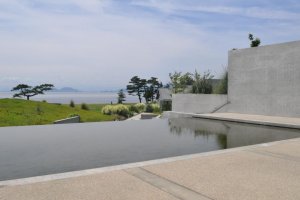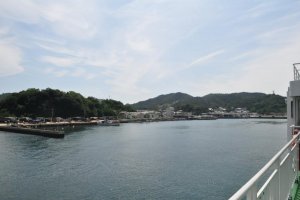I brought my family to indulge in a weekend of art and nature at the Art Island project, an ambitious, privately funded celebration of art and community anchored at the Tadao Ando designed Benesse Art Site complex on Naoshima. Benesse House itself is spread among three integrated museum-and-lodging complexes constructed of Ando’s signature refined concrete blocks. We stayed in the Park House, a three-storey structure with rooms on the top two floors overlooking delicately landscaped grounds sloping straight down to the Inland Sea. As with all Ando works, the building itself is the main feature and as guests, we felt we were part of the installation.
The entire main complex on Naoshima can be covered by foot, although Benesse House provides a complimentary shuttle bus and a few electric-assisted bicycles. After exploring the landscaping around the Park House, we followed the coast for about 2 kilometers with various sculptures tucked among miniature coves and sea grass brushed hilltops. George Ricky’s Three Vertical Squares Diagonal (pictured) was the most striking, but all the works were magnified by the surrounding scenery and scents of salt-water combined with cedar and wild sage. The complete list of outdoor works can be seen here.
Interspersed with the outdoor sculptures are three galleries which are all worth perusal. We wandered up from the shore through an open field landscaped so carefully that we had to work out whether it was wild or part of the installation (careful examination of the topography and foliage leads to the unmistakable conclusion that it has been meticulously sculpted by human hands) to the Lee Ufan Museum, the entry of which is hidden in an Ando-designed maze which plays with the sunlight to create a multi-angled sundial effect in its corridors. The gallery displays Lee’s works with a bespoke mixture of light and dark custom-crafted by Ando’s building.
We worked off our delicious soba lunch at the Benesse Museum by walking the 500 meters up to the Chichu Art Museum, another Ando-designed structure literally built into a hilltop and dedicated to works by Claude Monet, James Turrell and Walter De Maria. The daytime exhibits are integrated into Ando’s semi-subterranean structure, which includes an impressive slab of seemingly suspended sloping concrete wall. A particular treat is a carefully structured pond and shrubbery arranged to suggest a Claude Monet Impressionist scene.
We returned to the Chichu to participate in the “Night Sky” program, a live James Turrell installation in which the participants sit around a quadrangle room with an open ceiling to enjoy the changing light that cycles from dusk through sunset and matched by carefully calibrated LED shades cast across the white wall in a pure distillation of both natural and high-tech light.
The only negative of the whole experience was the timing of the shuttle bus from the Park House for the Night Sky show. The bus was inexplicably timed to arrive at the entry pavilion for the Chichu 45 minutes prior to the entry to the Night Sky show, and resulted in a directionless wait in the parking lot for the group of 30 participants. The over-organized hurry-up-and-wait scheduling can be overcome by making the 15 minute walk from the Park House or 10 minute walk from the Benesse House on your own (just don’t be late!).































